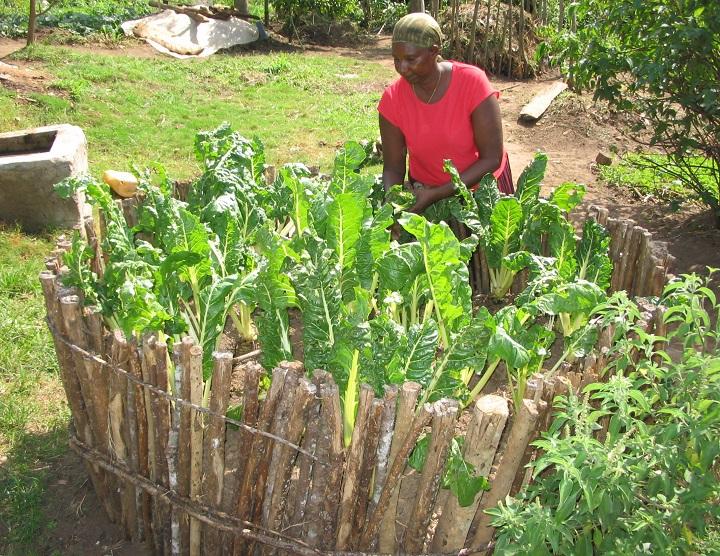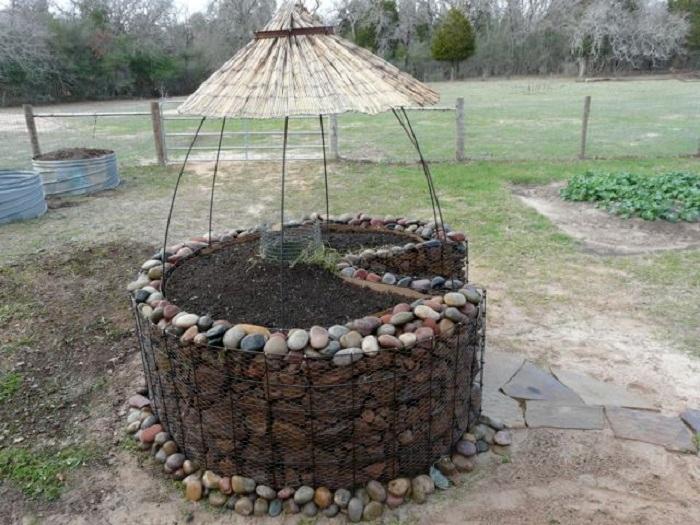




I'm just a girl trying to fix some seriously damaged land. Seriously.
 4
4




Visit Redhawk's soil series: https://permies.com/wiki/redhawk-soil
How permies.com works: https://permies.com/wiki/34193/permies-works-links-threads
 2
2




"People may doubt what you say, but they will believe what you do."
 4
4




"People may doubt what you say, but they will believe what you do."
 2
2




Visit Redhawk's soil series: https://permies.com/wiki/redhawk-soil
How permies.com works: https://permies.com/wiki/34193/permies-works-links-threads
 4
4




Jay Angler wrote:Hi Todd
That's an awesome raised keyhole bed. Great job!
It's not technically an "ARK" bed which is what the original picture that starts this thread is depicting,because it doesn't have a compost tube component. Is adding a compost pipe something you considered and decided against, or just something you never thought about or feel you don't need? I'm trying to decide how much the compost pipe does to eliminate watering in climates with inconsistent rainfall.
Thanks J.

"People may doubt what you say, but they will believe what you do."
 2
2















 2
2











 6
6











 2
2











 7
7











 8
8













 1
1




 2
2





"Also, just as you want men to do to you, do the same way to them" (Luke 6:31)
 5
5




 3
3




www.firmlyrooted.info
 2
2




www.firmlyrooted.info
 2
2




www.firmlyrooted.info
 1
1




Education: EAT Project * GROW
Projects: Keyhole-Hugel - Engine MOD




www.firmlyrooted.info
 2
2




Striving to grow things as naturally, simply, and cheaply as possible! 
My YouTube channel
 2
2




www.firmlyrooted.info
 2
2





Striving to grow things as naturally, simply, and cheaply as possible! 
My YouTube channel
 3
3




Chris Dean wrote:I was very surprised to find this video: (http://www.youtube.com/watch?v=ykCXfjzfaco) The above article and pictures are a souped-up version of the African keyhole beds in the video. I'm surprised because I was trying to think of ways to improve upon Hemenway's keyhole beds to make them more drought-tolerant a year ago and I never came across these!
Check out the plans to build your own charka-style spinning wheel from bicycle parts
Explore the intersection of permaculture, community, and the cycle of life at Herland Forest Natural Burial Cemetery and the Windward Education and Research Center
 5
5




“If we are honest, we can still love what we are, we can find all the good there is to find, and we may find ways to enhance that good, and to find a new kind of living world which is appropriate for our time.” ― Christopher Alexander
 5
5




Rachel Lindsay wrote:My gardening space this year is a long rectangle 35' x 15' literally running along the front of my house.
The garden will be in the rectangle in front of the house.
Visit Redhawk's soil series: https://permies.com/wiki/redhawk-soil
How permies.com works: https://permies.com/wiki/34193/permies-works-links-threads
 5
5





I have a few sticks on my 1/4 acre but that's about it that's on site--I would have to buy lots and lots of soil ($$$) to make raised beds, so raised rows would be most cost effective, but they would look boringJay Angler wrote:
1. Are you thinking of digging down to add hugel wood or having raised beds?
House faces north, so that is thankfully not an issue at allJay Angler wrote:2. Are you concerned about blocking light in the windows? Or is that actually an asset to manage summer heat, but die back in the winter for solar gain?
In the above proxy picture, the 1/3 of the area on the left side as you look at the photo is where in my yard I get the maximum (7 hours) of summer sun. Each ten feet towards the right gets a little bit less as you proceed West.Jay Angler wrote:3. What is the orientation? Where does the sun shine the most?
Well, it could be larger or smaller, but that's where the sun is any good (have got some 70-year old oak trees in front of the house that keep all but that near-the-house area pretty shady)Jay Angler wrote:4. Will the deer fencing be right on the 15' mark?
Yes to #7 and so no to #5 and #6--because garden will be in front of the sidewalk that leads from the driveway to the front door.Jay Angler wrote:5. So will people wanting to ring your doorbell, have to walk through this garden?
6. Are you planning to change how you have people access your house - remove or add sidewalk area?
7. Is there an existing area between a walkway and the house as in the picture?
I certainly will, if I can get a coherent plan in the next couple of days! Thank you so much again!Jay Angler wrote: Are you willing to draw and post a reasonably accurate diagram with measurements marking doors, windows, paths you intend to keep, and if you feel that at least one gate location is set, add it? I think that would be really helpful! Also maybe some indication of your growing goals - miniature fruit trees with guild, all annuals, mix of annual/perennial, mix of insectary plants so it looks like a flower garden but with a bunch of "stealth" veggies?
“If we are honest, we can still love what we are, we can find all the good there is to find, and we may find ways to enhance that good, and to find a new kind of living world which is appropriate for our time.” ― Christopher Alexander
 7
7




Rachel Lindsay wrote:My gardening space this year is a long rectangle 35' x 15' literally running along the front of my house. (It will have to be fenced for deer, so a rectangle border it must be.) I have been daydreaming about keyhole beds for years, but now that I have this shape in this place I wonder if it is a good idea.
 11
11




Rachel Lindsay wrote:My gardening space this year is a long rectangle 35' x 15' literally running along the front of my house. (It will have to be fenced for deer, so a rectangle border it must be.) I have been daydreaming about keyhole beds for years, but now that I have this shape in this place I wonder if it is a good idea.
Lina
https://catsandcardamom.com
 8
8




 7
7




Rachel Lindsay wrote:My gardening space this year is a long rectangle 35' x 15' literally running along the front of my house. (It will have to be fenced for deer, so a rectangle border it must be.) I have been daydreaming about keyhole beds for years, but now that I have this shape in this place I wonder if it is a good idea.
Alas, as you can see, all I can think of doing is arranging the keyhole beds in...rows. It doesn't look great in this simple diagram, and I am pretty sure it would not look great in my front yard. My imagination needs help, y'all!
After chuckling over this, please tell me what you think would be good to do for a long rectangle in front of my porch and front walkway!
$10.00 is a donation. $1,000 is an investment, $1,000,000 is a purchase.
 6
6




Doc
 2
2




 2
2





|
Hey, sticks and stones baby. And maybe a wee mention of my stuff:
Play Your Way to a Sustainable Lifestyle: Uncover Permaculture Principles with Each Card
https://gardener-gift.com/
|







